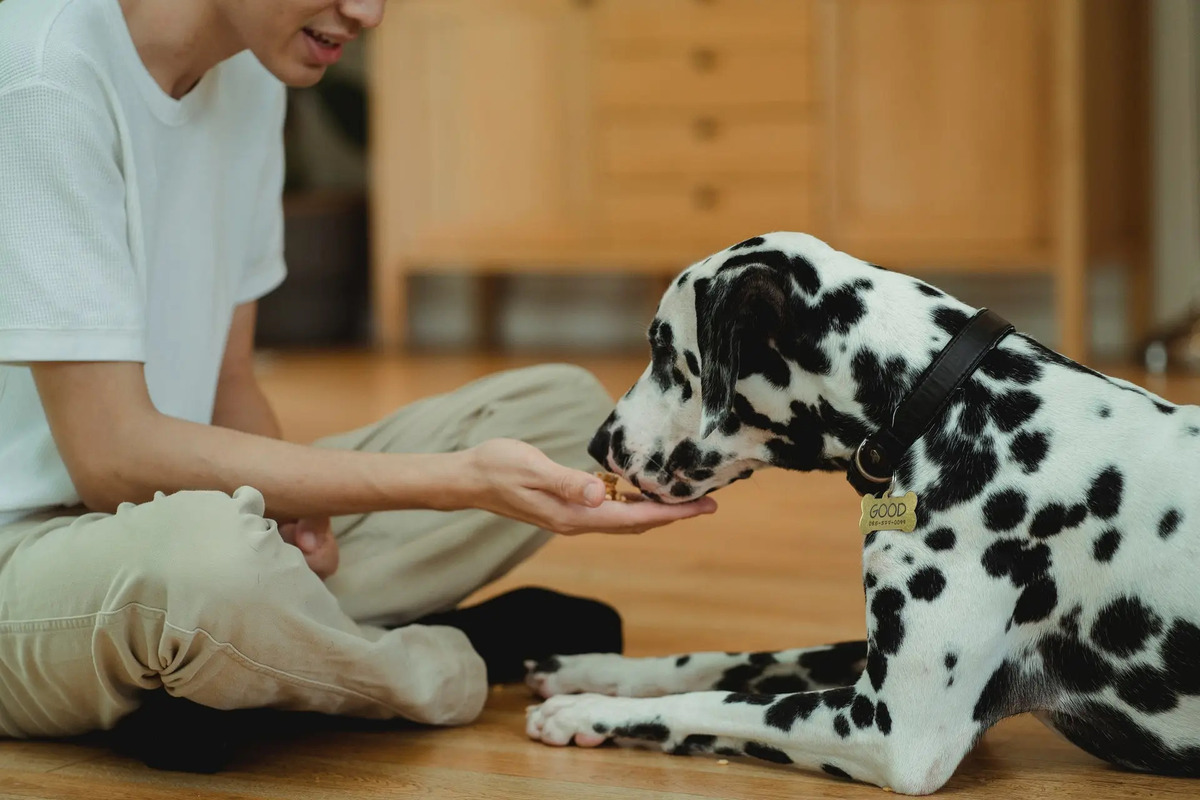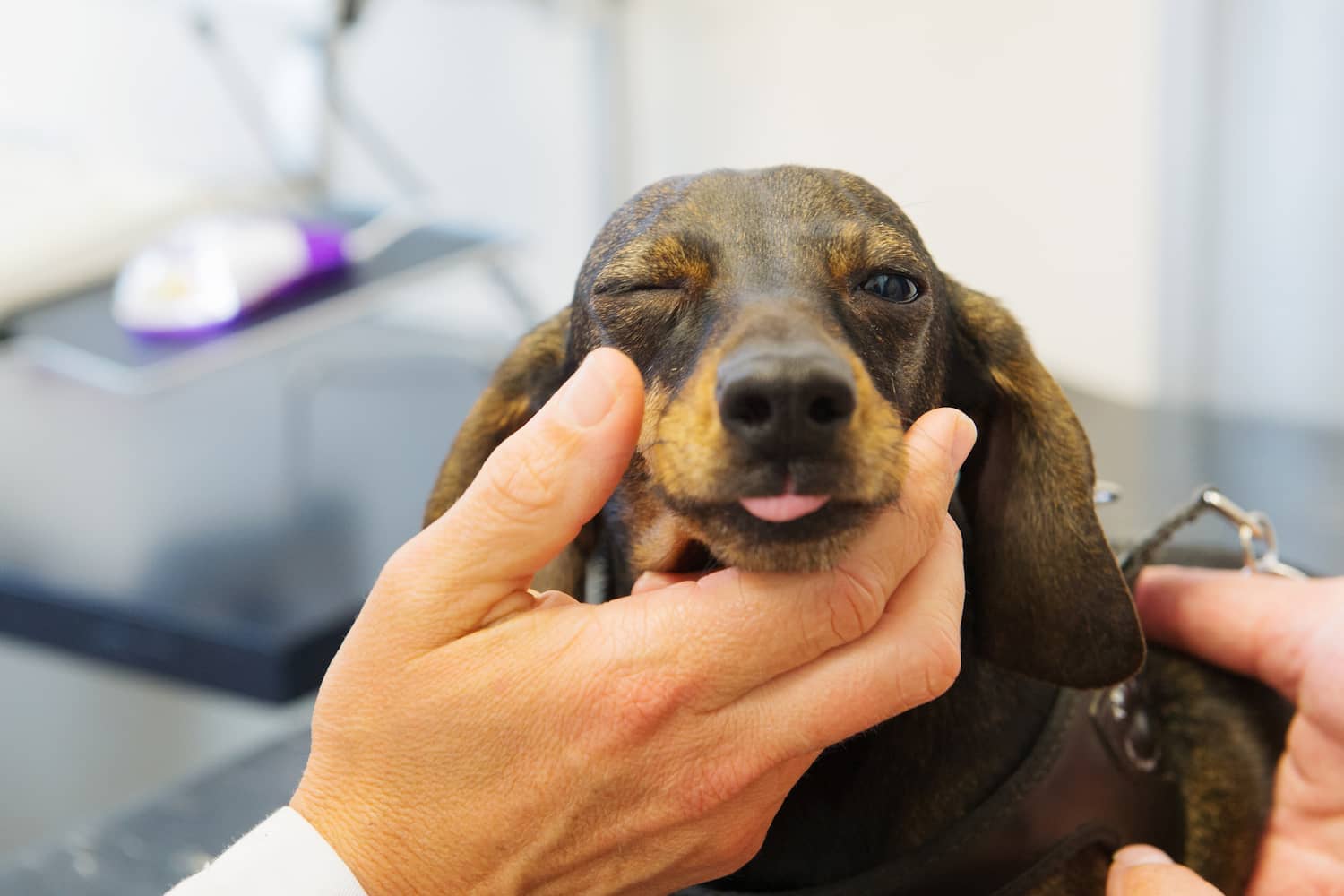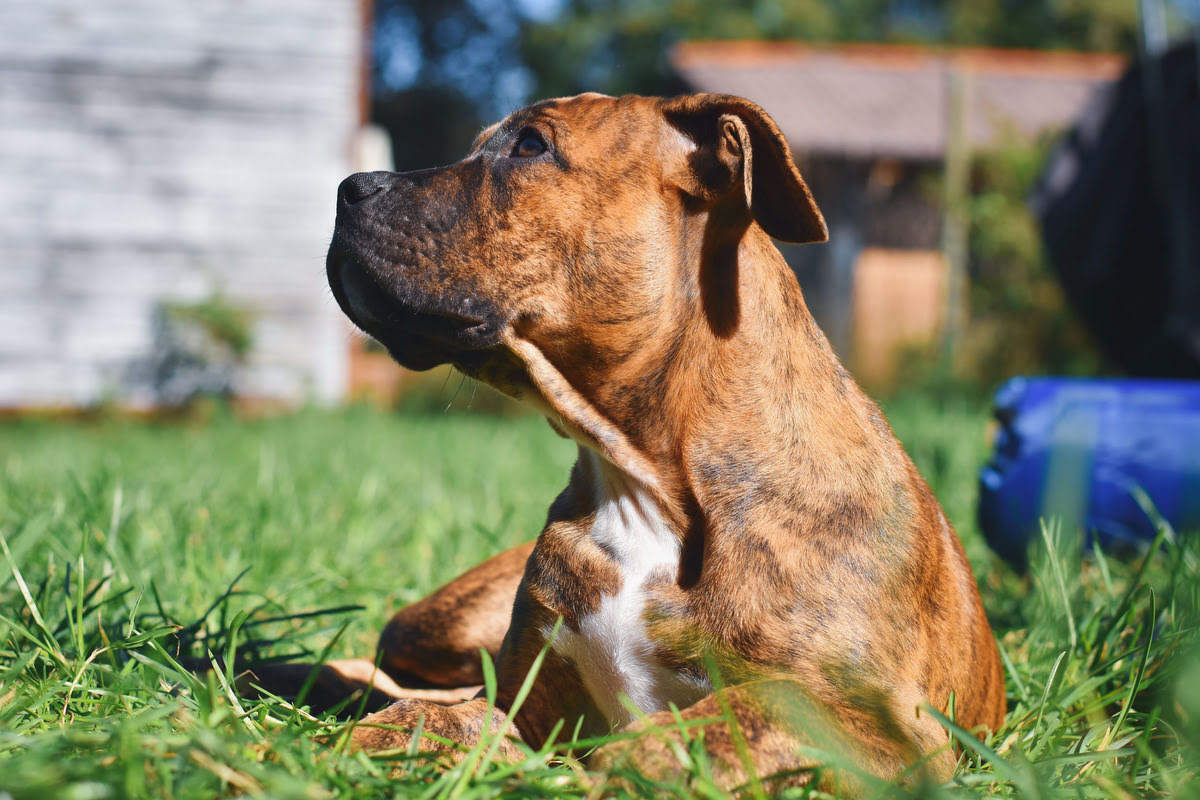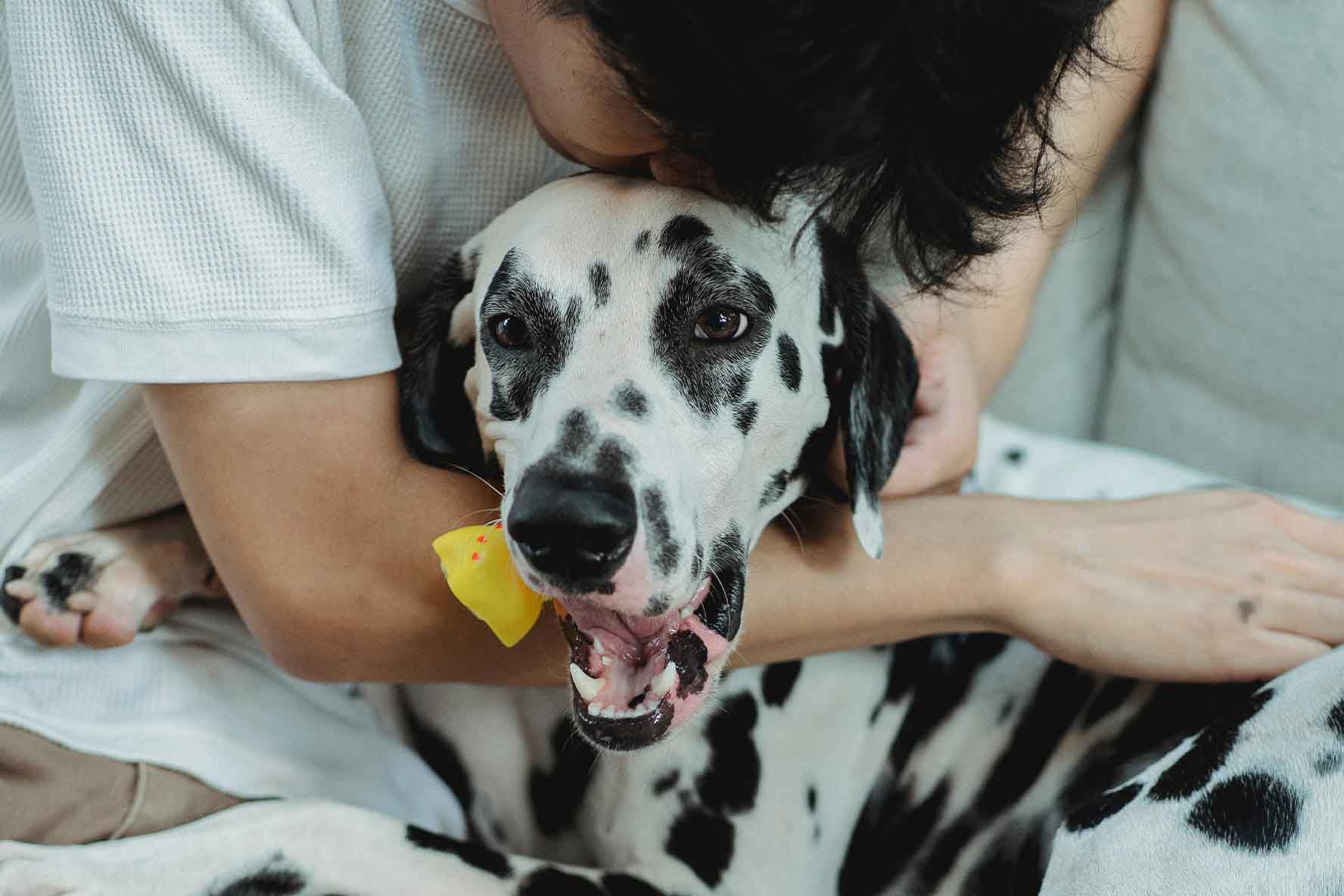Home>Health & Wellness>Common Health Issues>What Should We Do With A Dog That Has Stage 3 Mast Cell Cancer?
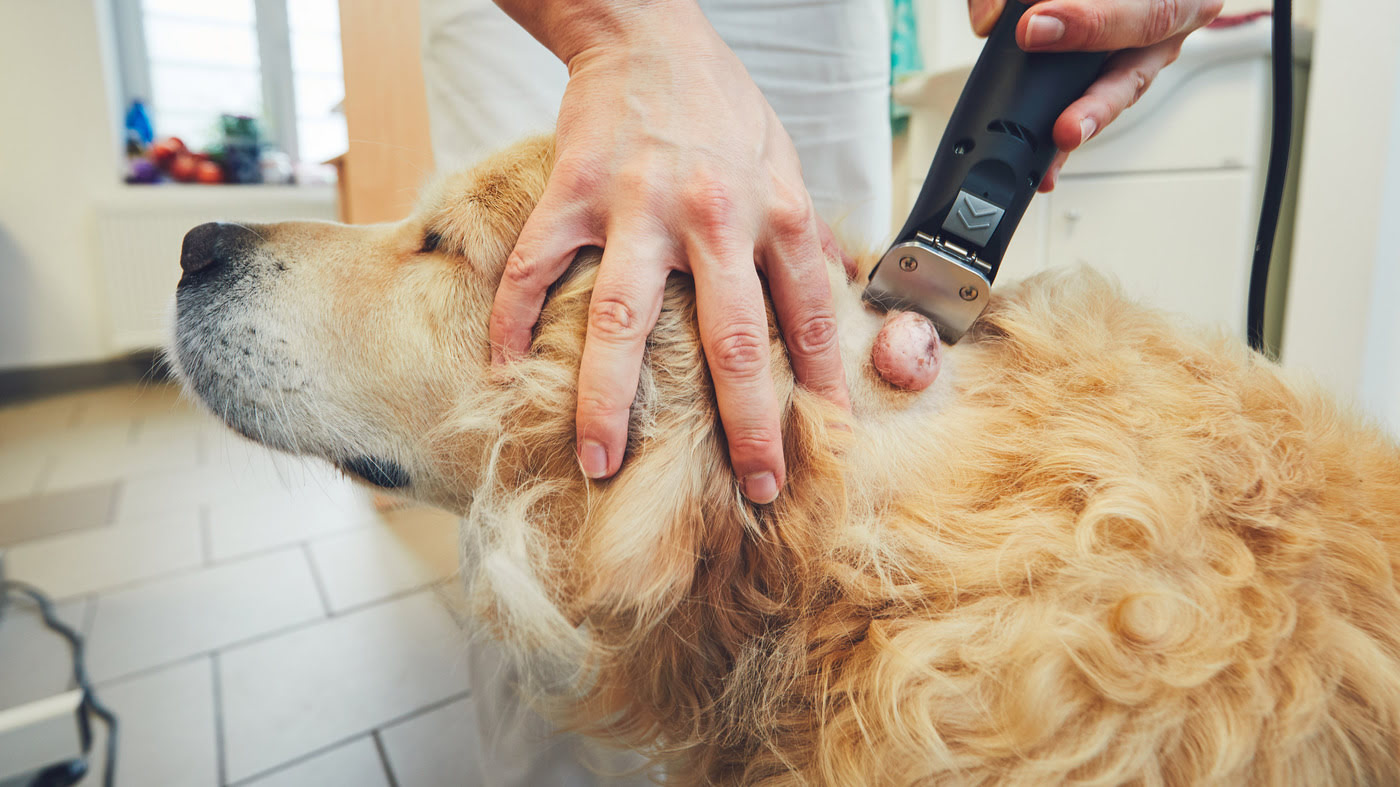

Common Health Issues
What Should We Do With A Dog That Has Stage 3 Mast Cell Cancer?
Published: February 4, 2024
Learn about common health issues in dogs, including stage 3 mast cell cancer, and discover the best course of action for your beloved pet. Expert advice on managing your dog's health.
(Many of the links in this article redirect to a specific reviewed product. Your purchase of these products through affiliate links helps to generate commission for Pawsomeoldies.com, at no extra cost. Learn more)
Table of Contents
Introduction
When a beloved furry companion is diagnosed with stage 3 mast cell cancer, it can be a distressing and overwhelming experience for pet owners. The diagnosis of cancer in a dog can evoke a range of emotions, from fear and sadness to a deep sense of responsibility to provide the best care possible. Understanding the nature of stage 3 mast cell cancer and the available treatment options is crucial for making informed decisions about the care and well-being of the canine family member.
As a pet owner, it's natural to seek out information and guidance to navigate this challenging situation. The journey of caring for a dog with stage 3 mast cell cancer involves not only medical decisions but also emotional and ethical considerations. It's a time when the bond between a pet and their human family is tested, and the desire to ensure the dog's comfort and quality of life becomes paramount.
In this article, we will explore the complexities of stage 3 mast cell cancer in dogs, shedding light on the treatment options available, as well as the concept of palliative care. We will also delve into the crucial aspect of considering the dog's quality of life throughout the treatment process. By providing a comprehensive understanding of these elements, pet owners can gain insights that will empower them to make the best decisions for their furry companions.
The journey of caring for a dog with stage 3 mast cell cancer is a challenging one, but it's also an opportunity to demonstrate unwavering love and commitment to a cherished pet. As we delve into the intricacies of this topic, it's important to approach it with empathy, understanding, and a deep sense of responsibility towards the well-being of our canine companions.
Read more: What To Do For A Dog That Has Cancer
Understanding Stage 3 Mast Cell Cancer in Dogs
Stage 3 mast cell cancer in dogs is a serious and potentially life-threatening condition that requires careful attention and understanding. Mast cells are a type of white blood cell that plays a crucial role in the body's immune response. However, when these cells become cancerous, they can form tumors in various parts of the body, leading to significant health challenges for the affected dog.
In stage 3 mast cell cancer, the tumors have spread to multiple locations in the body, making the condition more complex and difficult to treat. These tumors can affect the skin, as well as internal organs such as the spleen, liver, and lymph nodes. The spread of cancer to multiple sites amplifies the impact on the dog's overall health and necessitates a comprehensive approach to treatment and care.
Symptoms of stage 3 mast cell cancer in dogs can vary depending on the location and size of the tumors. Common signs may include lumps or masses under the skin, gastrointestinal issues such as vomiting or diarrhea, loss of appetite, lethargy, and unexplained weight loss. It's essential for pet owners to remain vigilant and seek prompt veterinary attention if any concerning symptoms arise.
Diagnosing stage 3 mast cell cancer typically involves a combination of physical examination, imaging tests such as ultrasound or X-rays, and biopsy of the tumors. Understanding the extent and severity of the cancer is crucial for determining the most appropriate course of action to provide the best possible care for the dog.
As pet owners come to grips with the diagnosis of stage 3 mast cell cancer in their dog, it's natural to experience a range of emotions, including anxiety and concern for the dog's well-being. Seeking support from veterinary professionals and connecting with other pet owners who have faced similar challenges can provide valuable reassurance and guidance during this difficult time.
By gaining a deeper understanding of the nature of stage 3 mast cell cancer in dogs, pet owners can equip themselves with the knowledge needed to make informed decisions about the dog's treatment and care. This understanding also fosters a sense of empathy and compassion, reinforcing the bond between the pet and their human family as they navigate this complex and emotional journey together.
Treatment Options for Stage 3 Mast Cell Cancer
The treatment of stage 3 mast cell cancer in dogs requires a comprehensive approach aimed at addressing the spread of tumors and managing the associated symptoms. Veterinary oncologists and specialists play a crucial role in guiding pet owners through the available treatment options, tailoring the approach to the specific needs of the affected dog.
-
Surgery: In cases where the tumors are localized and surgically accessible, the primary treatment may involve surgical removal of the tumors. This approach aims to eliminate as much of the cancerous tissue as possible, reducing the burden on the dog's body and potentially improving long-term outcomes.
-
Chemotherapy: For stage 3 mast cell cancer that has spread to multiple sites, chemotherapy may be recommended to target cancer cells throughout the body. Chemotherapy drugs can be administered orally or intravenously, and the treatment regimen is carefully designed to minimize side effects while effectively combating the cancer.
-
Radiation Therapy: This treatment modality utilizes targeted radiation to shrink tumors and slow the progression of cancer. Radiation therapy is particularly beneficial for tumors in locations where surgical removal is challenging, such as the nasal cavity or near vital organs.
-
Immunotherapy: Emerging as a promising avenue in cancer treatment, immunotherapy harnesses the body's immune system to recognize and attack cancer cells. In the context of stage 3 mast cell cancer, immunotherapy aims to enhance the dog's immune response against the tumors, potentially leading to better control of the disease.
-
Targeted Therapies: Certain medications specifically target the molecular pathways involved in mast cell cancer, offering a more precise and tailored approach to treatment. These targeted therapies can help manage the progression of the disease and improve the dog's quality of life.
-
Clinical Trials: Participation in clinical trials may be an option for some dogs with stage 3 mast cell cancer. These trials evaluate new treatment approaches, medications, or therapies, contributing to the advancement of veterinary oncology while potentially providing access to innovative and effective treatments for participating dogs.
The selection of treatment options for stage 3 mast cell cancer is influenced by various factors, including the dog's overall health, the extent of tumor spread, and the potential impact of treatment on the dog's quality of life. Veterinary oncologists work closely with pet owners to develop a personalized treatment plan that aligns with the dog's well-being and the family's preferences.
As pet owners navigate the array of treatment options, open communication with the veterinary care team is essential. Understanding the goals, potential benefits, and risks of each treatment modality empowers pet owners to make informed decisions that prioritize the dog's comfort and long-term welfare.
By exploring and considering the available treatment options for stage 3 mast cell cancer, pet owners demonstrate their unwavering commitment to providing the best possible care for their beloved canine companions. The journey of navigating treatment decisions is a testament to the deep bond and love shared between pets and their human families, inspiring a dedicated and compassionate approach to managing the challenges posed by this complex disease.
Palliative Care for Dogs with Stage 3 Mast Cell Cancer
Palliative care for dogs with stage 3 mast cell cancer plays a crucial role in ensuring the dog's comfort and quality of life as they navigate the complexities of the disease. This specialized form of care focuses on alleviating symptoms, managing pain, and supporting the overall well-being of the dog, acknowledging that the cancer may not be curable. It is designed to provide compassionate and comprehensive support for the dog and their human family throughout the course of the illness.
One of the primary goals of palliative care is to address the dog's physical discomfort and enhance their quality of life. This may involve the use of pain management strategies, such as medications to alleviate pain and discomfort associated with the cancer. Additionally, dietary modifications and nutritional support tailored to the dog's specific needs can contribute to their overall well-being and comfort.
Emotional and psychological support is also integral to palliative care for dogs with stage 3 mast cell cancer. Pet owners may observe changes in their dog's behavior or mood as they undergo treatment or experience the effects of the disease. Providing a nurturing and reassuring environment, along with ample opportunities for companionship and bonding, can have a positive impact on the dog's emotional state and overall outlook.
Furthermore, palliative care encompasses the consideration of the dog's social and environmental needs. Ensuring a peaceful and stress-free living environment, minimizing disruptions, and maintaining familiar routines can contribute to the dog's sense of security and well-being. Additionally, regular veterinary check-ups and open communication with the veterinary care team are essential components of palliative care, allowing for ongoing assessment and adjustment of the care plan based on the dog's evolving needs.
As part of palliative care, pet owners are encouraged to engage in open and honest discussions with the veterinary care team to gain a clear understanding of the dog's prognosis and the potential challenges they may face. This collaborative approach empowers pet owners to make informed decisions about the dog's care, taking into account their preferences and the dog's best interests.
Ultimately, palliative care for dogs with stage 3 mast cell cancer embodies a compassionate and holistic approach to supporting the dog's well-being and comfort, while also acknowledging the emotional needs of the human family. It serves as a testament to the unwavering dedication and love that pet owners have for their furry companions, ensuring that the dog's journey is filled with compassion, dignity, and a deep sense of care and understanding.
Quality of Life Considerations
Ensuring the quality of life for a dog with stage 3 mast cell cancer is a paramount consideration for pet owners and veterinary care teams alike. The concept of quality of life encompasses various facets, including the dog's physical comfort, emotional well-being, and overall satisfaction with daily life. As the dog undergoes treatment and navigates the challenges posed by the disease, it becomes essential to prioritize their quality of life, aiming to provide them with the highest level of comfort and contentment possible.
Physical comfort forms the cornerstone of quality of life considerations for dogs with stage 3 mast cell cancer. This involves managing pain effectively, addressing any discomfort or side effects of treatment, and ensuring that the dog's physical needs are met with compassion and attentiveness. Pain management strategies, such as medications and supportive care, play a crucial role in enhancing the dog's physical comfort, allowing them to experience relief and tranquility as they progress through their journey.
Emotional well-being is equally significant in the context of quality of life for dogs with cancer. The emotional state of the dog can be influenced by various factors, including the impact of the disease, treatment-related experiences, and changes in their daily routine. Providing a nurturing and reassuring environment, ample opportunities for companionship and bonding, and recognizing the dog's emotional cues and needs contribute to their emotional well-being, fostering a sense of security and contentment.
Moreover, maintaining the dog's social interactions and engagement with their human family members is integral to their emotional well-being. Dogs derive immense comfort and joy from the companionship and affection of their human family, and fostering these connections is essential for supporting the dog's emotional resilience and overall satisfaction with life.
In addition to physical and emotional aspects, the dog's overall satisfaction with daily life is a key consideration in assessing their quality of life. This involves observing their enjoyment of activities, their appetite and interest in food, their engagement in play and social interactions, and their ability to experience moments of joy and comfort amidst the challenges they face. Understanding the dog's individual preferences and adapting their environment and routines to align with their needs contributes to their overall satisfaction and well-being.
As pet owners and veterinary care teams navigate the complexities of managing stage 3 mast cell cancer in dogs, the concept of quality of life remains at the forefront of decision-making. It serves as a guiding principle, shaping the treatment approach, care strategies, and the overall approach to supporting the dog and their human family through the journey. By prioritizing the dog's physical comfort, emotional well-being, and overall satisfaction with life, pet owners demonstrate their unwavering commitment to providing the best possible care for their beloved canine companions.
The considerations surrounding the quality of life for dogs with stage 3 mast cell cancer embody a compassionate and empathetic approach, acknowledging the dog's individual needs and preferences while striving to create an environment that fosters their well-being and contentment. It is a testament to the deep bond and love shared between pets and their human families, inspiring a dedicated and compassionate approach to managing the challenges posed by this complex disease.
Read more: What Can I Do If My Dog Has Nose Cancer
Making the Best Decision for Your Dog
Making decisions regarding the care and treatment of a dog with stage 3 mast cell cancer is a weighty responsibility that requires careful consideration and a deep understanding of the dog's needs and well-being. As pet owners navigate this challenging journey, they are faced with a myriad of choices, ranging from treatment options to palliative care and quality of life considerations. Each decision holds profound significance, shaping the course of the dog's journey and influencing their comfort and welfare.
The process of making the best decision for a dog with stage 3 mast cell cancer begins with a foundation of knowledge and understanding. Pet owners are encouraged to engage in open and transparent communication with the veterinary care team, seeking comprehensive information about the available treatment options, potential outcomes, and the impact of each decision on the dog's quality of life. This knowledge empowers pet owners to make informed choices, aligning with the dog's best interests and their own values and preferences.
Furthermore, the decision-making process involves a deep consideration of the dog's individual needs and well-being. Understanding the dog's personality, preferences, and response to treatment and care interventions plays a pivotal role in shaping the decisions made on their behalf. This personalized approach ensures that the chosen path resonates with the dog's unique characteristics and fosters a sense of comfort and security throughout their journey.
Embracing a holistic perspective, pet owners are encouraged to consider the potential impact of treatment on the dog's overall quality of life. This encompasses evaluating the balance between managing the cancer and preserving the dog's physical comfort, emotional well-being, and satisfaction with daily life. By prioritizing the dog's holistic welfare, pet owners can navigate the decision-making process with empathy and a deep sense of responsibility towards their furry companion.
The best decision for a dog with stage 3 mast cell cancer is one that reflects the unwavering love and commitment of their human family. It embodies a balance between medical considerations and the dog's individual needs, fostering an environment of compassion, understanding, and dedicated support. As pet owners embark on this journey, they demonstrate a profound dedication to providing the best possible care for their beloved canine companion, ensuring that each decision reflects a deep sense of empathy and a commitment to the dog's well-being.
In essence, making the best decision for a dog with stage 3 mast cell cancer is a testament to the enduring bond between pets and their human families, inspiring a compassionate and thoughtful approach to navigating the complexities of the disease. It is a journey marked by empathy, understanding, and an unwavering commitment to providing the dog with comfort, care, and a sense of security as they face the challenges posed by cancer.
Conclusion
The journey of caring for a dog with stage 3 mast cell cancer is a profound and emotionally charged experience, marked by a deep sense of responsibility and unwavering love. As pet owners navigate the complexities of this challenging journey, they are confronted with a myriad of decisions, ranging from treatment options to palliative care and considerations of the dog's quality of life. Each choice holds profound significance, shaping the course of the dog's journey and influencing their comfort and welfare.
Throughout this journey, the bond between the pet and their human family is tested, and the desire to ensure the dog's comfort and quality of life becomes paramount. It is a time when empathy, understanding, and a deep sense of responsibility towards the well-being of our canine companions come to the forefront. The journey of caring for a dog with stage 3 mast cell cancer is a testament to the enduring bond between pets and their human families, inspiring a compassionate and thoughtful approach to navigating the complexities of the disease.
As pet owners grapple with the diagnosis of stage 3 mast cell cancer in their beloved furry companions, they are called upon to demonstrate unwavering love and commitment. The process of making decisions regarding the care and treatment of a dog with stage 3 mast cell cancer requires careful consideration and a deep understanding of the dog's needs and well-being. It involves engaging in open and transparent communication with the veterinary care team, seeking comprehensive information about the available treatment options, and considering the potential impact of each decision on the dog's quality of life.
Ultimately, the journey of caring for a dog with stage 3 mast cell cancer is a testament to the enduring bond between pets and their human families, inspiring a compassionate and thoughtful approach to navigating the complexities of the disease. It is a journey marked by empathy, understanding, and an unwavering commitment to providing the dog with comfort, care, and a sense of security as they face the challenges posed by cancer.
In essence, the journey of caring for a dog with stage 3 mast cell cancer is a profound demonstration of love, empathy, and unwavering dedication. It is a journey that underscores the deep bond between pets and their human families, inspiring a compassionate and thoughtful approach to navigating the complexities of the disease.
